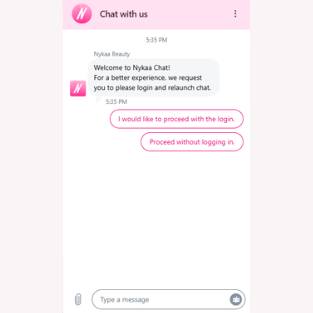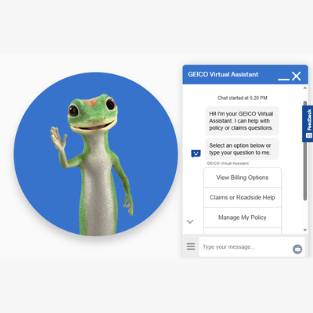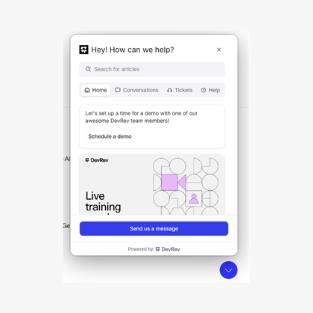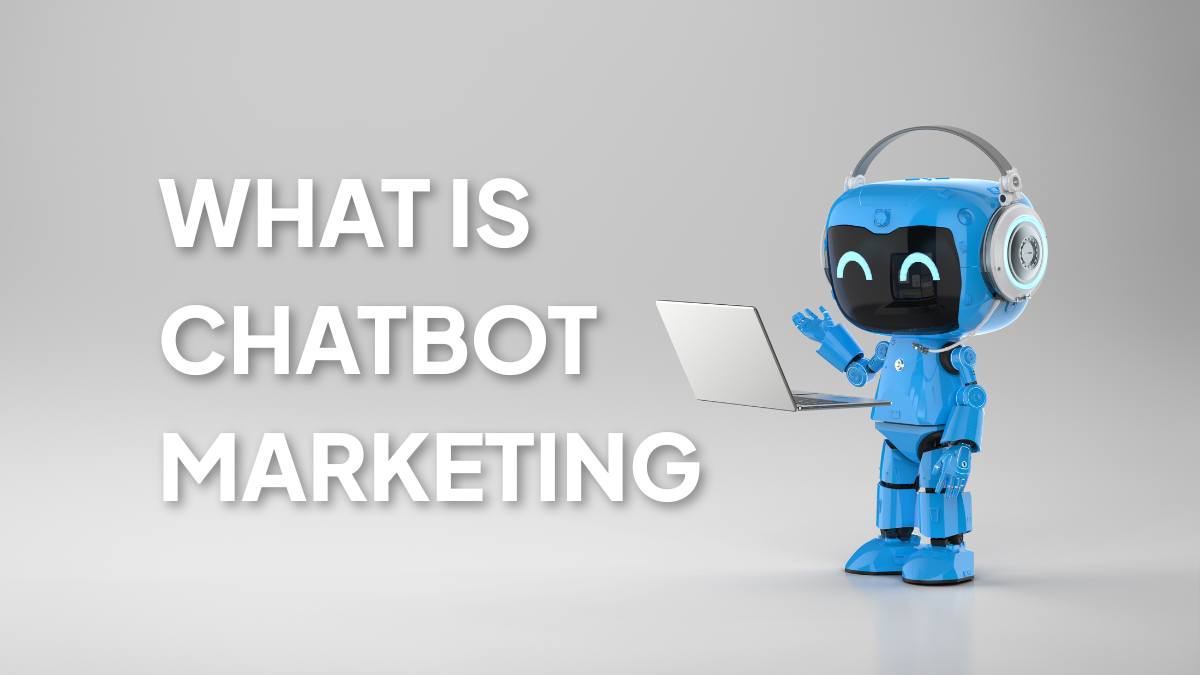Have you noticed how conversations with brands online are getting quicker, smarter, and honestly, a bit more human-like?
Well, you can thank chatbot marketing for that.
In the past few years, chatbots have gone from being just a cool tech feature to becoming a core marketing strategy for brands. And in 2025, with AI evolving like crazy and customer expectations skyrocketing, chatbot marketing is no longer optional; it’s essential.
This guide will break down exactly what is chatbot marketing, why it’s booming, the real benefits for your brand, and exactly how to use it effectively. We’ll also look at real examples from brands you probably know and admire.
Let’s dive in.
Table of Contents
What is Chatbot Marketing?
Chatbot marketing is a strategy where brands use automated chat software to interact with potential or current customers.
Think of it as having a virtual assistant on your website, social media, or messaging apps, ready to answer questions, recommend products, capture leads, or even close sales, all without needing a human on the other end.
It’s like traditional email marketing or automation workflows but in real-time, with two-way conversations.
Chatbots vs Traditional Marketing Automation
So, what’s different here?
- Traditional marketing automation is usually one-way: brands send you emails, push notifications, or SMSes.
- Chatbot marketing is conversational. The user types; the bot responds. And if the chatbot is built well, it feels like chatting with a helpful team member.
And it’s not just text anymore. With the rise of voice-based chatbots (think Alexa, Google Assistant), conversational marketing is starting to go hands-free.
Why It’s Gaining Popularity in 2025
The reason is simple: people want faster answers. And businesses want scalable conversations that don’t burn through human resources.
With generative AI advancing, chatbots are becoming smarter, more context-aware, and better at making customers feel heard.
Benefits of Chatbot Marketing for Brands
1. 24/7 Customer Engagement
Here’s the thing, people don’t only visit your site during office hours. They’re online at weird times, midnight, Sunday mornings, random lunch breaks. And your chatbot? It’s always on. Doesn’t sleep. Doesn’t call in sick. So whenever someone drops by, they can still get help, ask questions, or grab that free guide you’re offering.
2. Cost Reduction
Hiring people for support is great, but it’s expensive. And hiring for 24/7 coverage? Forget it. That’s a whole different budget. A chatbot’s like that one friend who’s always free to help. Pay for the tool once, or monthly if it’s SaaS, and that bot can talk to hundreds of people at once. Cheap, reliable, no coffee breaks.
3. Instant Lead Qualification
Nobody wakes up thinking, “Wow, I hope I get to fill out a long form today.” Forms suck. Chatbots flip that. They just ask you a question like a person would. “Looking for personal or business insurance?” Done. Now your sales team knows exactly what that person wants, and you didn’t have to convince them to fill out 12 boring fields.
4. Personalized User Experiences
We’ve all dealt with websites that feel like they don’t know us. Feels cold, right? Chatbots fix that by remembering your name, what you looked at last time, even where you live. Suddenly, the recommendations feel like they get you. Not just random “Buy this” nonsense, but stuff that actually fits your vibe. Makes you way more likely to click.
5. Faster Sales Cycles
Ever been super ready to buy something, and then nobody helps you, and you just… give up? Happens all the time. Chatbots keep that from happening. They answer right away, help you pick the right thing, and might even toss you a discount to sweeten the deal. The faster people get help, the faster they buy. Simple as that.
6. Scalable Customer Support
If you’ve got 5 people asking questions, your team can handle it. 50? It’s chaos. 500? Forget it. Chatbots don’t care how many people show up, they’ll chat with everyone, all at the same time. And if it’s something the bot can’t handle, it passes it to a real human. It’s like giving your support team superpowers.
How Chatbots Fit into the Customer Journey
The best thing about chatbots? You can drop them anywhere in your customer journey. Doesn’t matter if someone just heard about you or they’ve already bought something, they work at every step. Let’s break it down:
1. Awareness Stage
At this point, people barely know who you are. So don’t go pitching your product yet. Use chatbots to say something like, “Hey, want a free guide to help with XYZ?” Could be a free eBook, a checklist, a quick cheat sheet, whatever works. It’s not about selling, it’s about getting attention and building trust first.
Example: “Want our free guide on boosting your social media reach? Just drop your email here!”
2. Consideration Stage
Now they kinda know you. This is when they’re checking if you’re legit or if your product solves their problem. Chatbots here should help them figure things out, like showing demos, sharing product comparison guides, or just answering annoying little questions that stop people from moving forward. Basically: Help, don’t hard-sell.
3. Decision Stage
Alright, this is where the chatbot does some heavy lifting. Person’s ready to buy, but maybe they just need a little push. Now’s when you offer that limited-time discount or help them find the right plan or product. Guide them right to checkout. If done right, it almost feels like they’ve got a friend helping them shop.
Example: “We’ve got a 10% discount running till midnight. Want me to add that to your cart?”
4. Post-Purchase Stage
Don’t ghost people after they buy, that’s amateur stuff. This is when you really build loyalty. Your chatbot can help with stuff like tracking their order, asking for feedback, or even recommending something else they’d actually love. Feels more like you care, not just like you’re chasing sales. That’s how repeat customers happen.
Chatbots vs Conversational AI: Key Differences
Let’s get one thing straight, not all chatbots are created equal.
Here’s the deal:
| Chatbots | Conversational AI |
| Rule-based | AI-powered and learns from interactions |
| Pre-set questions/answers | Can understand context and intent |
| Good for simple tasks | Better for complex, flowing conversations |
Which should you choose?
- Small businesses or simpler use-cases → Chatbots are great.
- Larger brands or complex sales cycles → Conversational AI (like Intercom, Drift, or ChatGPT integrations) is the way to go.
Real Examples of Chatbot Marketing in Action
Sometimes, examples explain better than theory. Let’s look at how real brands are nailing chatbot marketing right now:
🟣 Nykaa – Personalized Product Recommendations

Nykaa, India’s beauty eCommerce giant, uses chatbots brilliantly on both their website and WhatsApp.
If you’re browsing skincare or makeup, the chatbot might pop up asking what skin type you have or what kind of makeup look you prefer. Based on your responses, it curates personalized product recommendations.
It’s like having your own beauty consultant but faster, always available, and not pushy. Plus, they link directly to the product pages, making the buying journey smooth.
🟣 Geico – Simplifying Insurance Queries

Insurance is complicated, but Geico has made it less of a headache by using a chatbot on their website and app.
Let’s say you’re wondering about coverage types or want to update your policy. The Geico chatbot guides you through quick options or even redirects you to a human rep if needed.
Result? Faster support. Happier customers.
🟣 DevRev – Tech Support & Product Education

DevRev, a SaaS product company, uses chatbots for both support and education.
Their chatbot helps users get answers about features, sends product tutorials, and resolves common issues without waiting in long queues. If the issue is technical, the chatbot automatically escalates it to the right team.
It’s customer success done right.
Chatbot Marketing Strategies
Now let’s get to the fun part: strategies you can actually use to grow your brand with chatbots.
These aren’t random ideas, they’re battle-tested, and you’ve probably seen them in action on big brands’ websites or social media.
Here’s the breakdown:
1. Lead Generation Chatbots
Forget boring forms. Chatbots can capture leads while holding a conversation. For example:
- “Hey! Want a free SEO checklist? Just drop your email below 👇”
- Qualify leads by asking questions: “What’s your business size?” → personalized offers.
Works well on websites, landing pages, and even Instagram DMs.
2. Product Recommendation Chatbots
Help users find exactly what they’re looking for without having them scroll endlessly.
Example:
- “Are you shopping for men’s or women’s shoes?”
- → “What’s your size?”
- → Show bestsellers + link to checkout.
Nykaa, Sephora, and even eCommerce stores on Shopify use this constantly.
Also Read: E-commerce Marketing Strategies
3. Customer Support & Self-Service Chatbots
These chatbots cut down your support load by handling:
- FAQs (“How do I reset my password?”)
- Order tracking (“Where’s my order?”)
- Policy clarifications (“What’s your return window?”)
Pro Tip → Always offer an option to talk to a real human.
4. Appointment Booking & Scheduling Chatbots
Especially useful for:
- Salons
- Healthcare providers
- Consultants/coaches
Instead of sending visitors to clunky booking forms, your chatbot handles it conversationally:
“Want to book a free consultation? Pick a date & time below 👇”
Enroll Now: Advanced Digital Marketing Course

5. Content Delivery Chatbots (Newsletters, PDFs, Guides)
Turn your chatbot into a mini content hub:
- Offer PDFs, case studies, or video demos.
- “Want my free guide on boosting ad conversions? Just type YES.”
Works great for B2B lead magnets.
6. Giveaway, Quiz & Contest Chatbots (for Engagement)
People love free stuff. Use chatbots to:
- Run quizzes (“Find out your marketing style → Take this 2-min quiz”)
- Collect entries for giveaways.
- Boost engagement with gamified experiences.
Bonus: Collect emails & phone numbers during these fun interactions.
7. Feedback & Review Collection Chatbots
After a purchase or support interaction, trigger:
“How was your experience with us today? Rate from 1-5 ⭐”
It’s less annoying than email requests and gets instant responses. Great for improving your offerings too.
8. Community Engagement & Management Bots
If you’re running online communities (Telegram, Discord, FB Groups), chatbots can:
- Welcome new members.
- Share important updates.
- Guide people to resources or community guidelines.
Perfect for course creators, influencers, and SaaS brands building tribes around their product.
Mistakes to Avoid in Chatbot Marketing
Even good tools fail if used wrong. Here’s what trips most brands:
- Forgetting human handover: No one wants to be stuck talking to a bot when they need help from a real person.
- Overusing generic responses: “I didn’t understand that” on repeat? Big no.
- Making it all about you: If your chatbot talks like a pushy salesperson, users will leave.
- No personalization: Using someone’s name or previous interaction makes it warmer.
- Ignoring follow-ups: After a chat, follow up with an email or offer, it makes a difference.
Key Takeaways: Why Chatbots Should Be Part of Your Marketing
- Your audience doesn’t want to wait. Chatbots keep the conversation going 24/7.
- They help you save serious money by doing repetitive work your team shouldn’t have to do.
- People don’t want to browse 50 pages, chatbots recommend stuff instantly.
- Better leads, faster. While they’re still “warm,” not three days later.
- Sales happen quicker when people get answers right when they’re ready to buy.
- Doesn’t matter if 3 people or 300 are messaging, you’re covered.
- Works basically everywhere now, Instagram, WhatsApp, your site, Facebook.
- Chatbots make your brand feel approachable, like you actually care about helping.
- Honestly? If you don’t start using chatbots now, your competitors will, and they’ll win that attention.
Conclusion
Here’s the honest truth: chatbot marketing works because people don’t want to waste time. Clicking around random menus, waiting for email replies… nah. People want answers now. And chatbots give them that.
They pop up where people are, phones, websites, DMs, and just help. No drama. No awkward sales pitches (if you build them properly). Just fast, useful conversations.
If you’re trying to grow your business, sell more, or just stop losing leads because nobody replied in time, start with a chatbot. Doesn’t have to be fancy. Build as you go. Start small, improve later.
Feels good when someone messages your business, and they actually get help before your competitors reply, right? That’s the win.
FAQs: What is Chatbot Marketing
What is chatbot marketing in simple terms?
It’s basically chatting instead of forms. Bots help people find stuff, answer questions, or even buy something without all the clicking around.
Is chatbot marketing suitable for small businesses?
100%. Small businesses can use chatbots to collect leads, answer FAQs, or just make sure people don’t leave because no one answered their DM.
What platforms support chatbot marketing?
WhatsApp, Messenger, Instagram DMs, websites, all of that. Tools like Intercom, Drift, Chatfuel, ManyChat make it easy to set up now.
Are chatbots replacing human agents?
Nope. Bots handle boring stuff. Humans jump in when things get complicated or personal. It’s teamwork, not takeover.
How do I build a chatbot for my business?
Try tools like ManyChat or Chatfuel if you’re new. Easy to set up. Want something advanced? Hire someone who knows the tech inside out.
What’s the future of chatbot marketing?
It’s only gonna get smarter. More personal. Probably more voice stuff too. Think bots that actually know you when they say hello.

